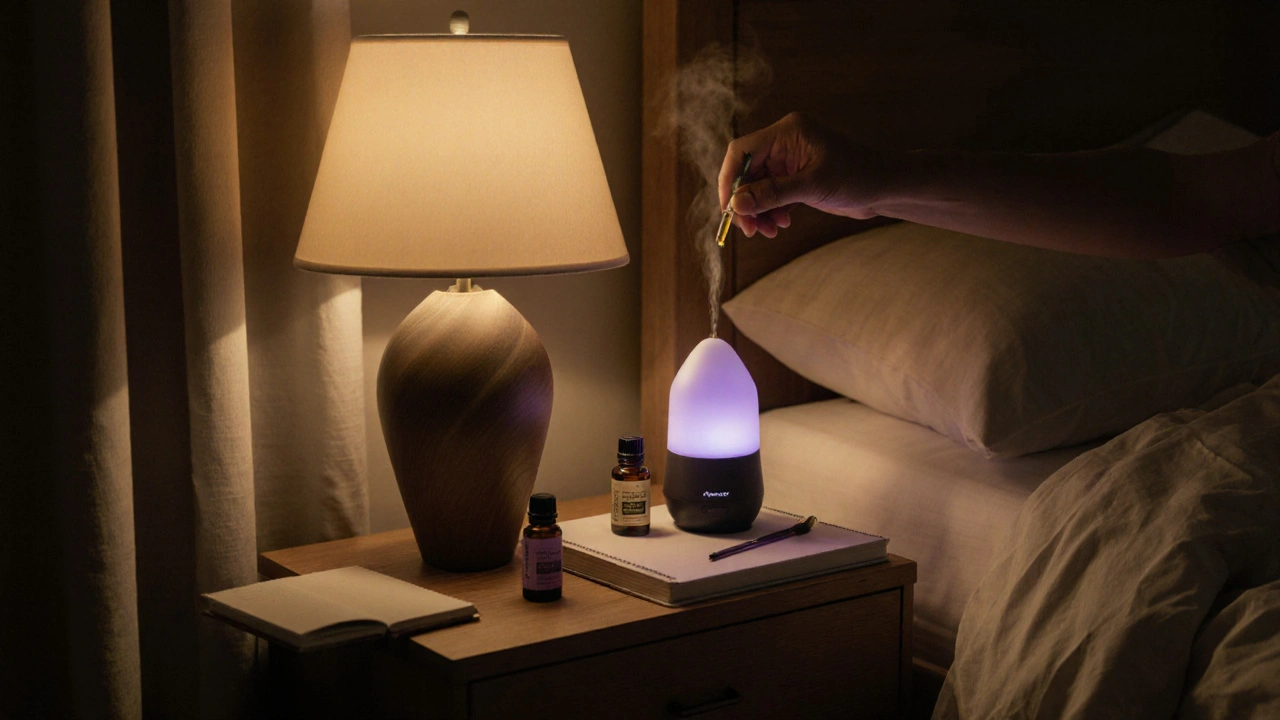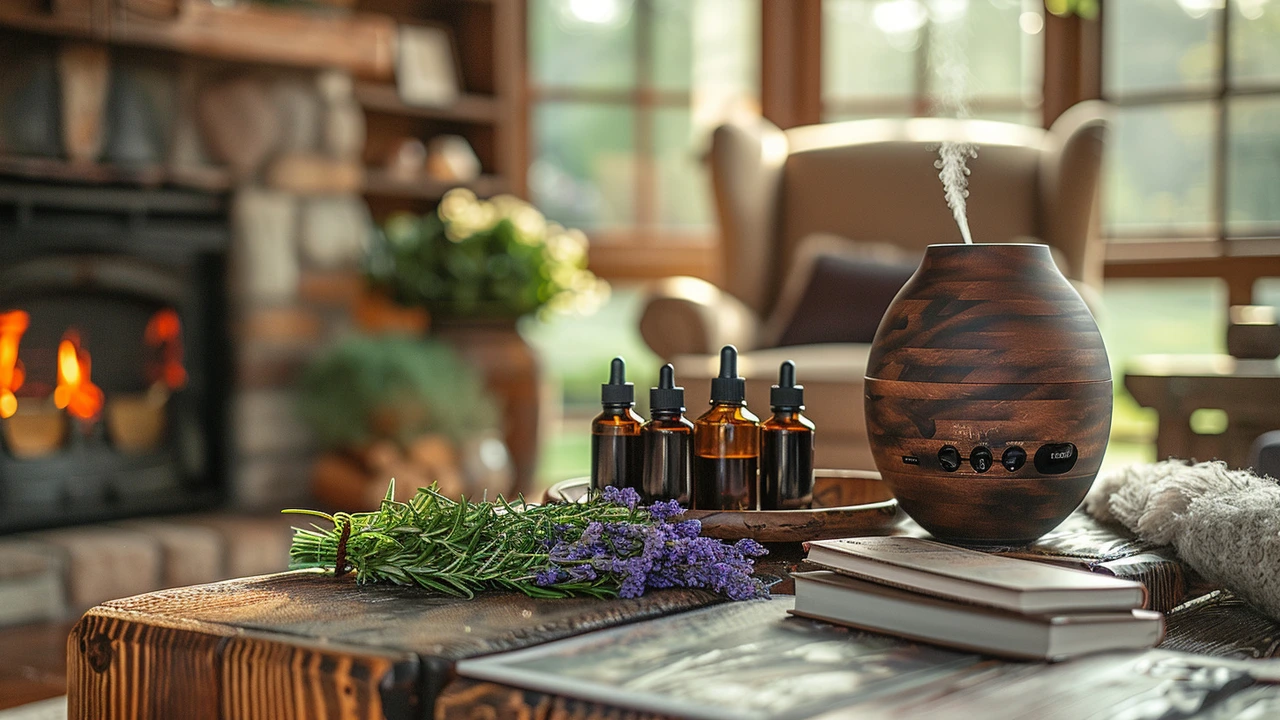Essential Oils and Dogs: What to Know Before You Try Them
Essential oils can smell great and help people relax, but dogs react differently. Some oils are safe when used carefully; others can make a dog seriously sick. If you want to use oils around your dog, the goal is simple: help your dog, not overwhelm or harm them.
Safe ways to use essential oils with dogs
Diffusion is the gentlest starting point. Run a diffuser on low for 10–15 minutes in a room where your dog can leave if they want. Use only 1–2 drops in a small diffuser session and watch your dog’s behavior. If they move away, stop.
For topical use, always dilute. A practical rule: 1 drop of essential oil in 4 teaspoons (20 ml) of carrier oil gives about a 0.25% dilution — a safe place to start for most dogs. For bigger dogs you can use up to 1% (about 4 drops in 4 teaspoons). Never apply undiluted oil directly to skin. Avoid the face, eyes, nose, and genitals. Do a small patch test: apply a tiny amount to a spot on the back and check for redness or irritation over 24 hours.
Inhalation (short, supervised exposure) is useful for calming or mild nausea. Place a drop on a cloth across the room — not right next to your dog’s nose — and keep sessions short. Always let your dog leave the area if they show discomfort.
Oils to use, oils to avoid, and warning signs
Commonly used and generally better tolerated: lavender, Roman chamomile, ginger, cedarwood, and frankincense — always diluted. These are often chosen for mild calming, nausea, or skin support, but don’t expect a miracle; watch your dog and adjust.
Do NOT use tea tree (melaleuca) — it can be toxic even in tiny amounts. Avoid pennyroyal, wintergreen, ylang-ylang, and concentrated eucalyptus or peppermint on small or young dogs. Citrus oils can irritate skin and cause sensitivity in some dogs.
Stop use and contact your vet if you see drooling, vomiting, tremors, trouble breathing, excessive lethargy, shaking, or unusual behavior. Pregnant dogs, puppies under six months, elderly dogs, and pets with liver disease need extra caution — check with your veterinarian first.
If you’re unsure, ask a vet who knows about essential oils or a certified animal aromatherapist. Start slow, use very low dilutions, and always put your dog’s comfort and safety first. When used carefully, essential oils can be a helpful tool — but they should never replace veterinary care.

Mastering the Art of Aromatherapy: A Step-by-Step Guide
Learn how to use essential oils safely and effectively for sleep, focus, and stress relief with this step-by-step aromatherapy guide. Discover which oils work best, how to avoid common mistakes, and how to build a simple daily routine.

Aromatherapy Benefits: Unlocking the Power of Essential Oils
Aromatherapy goes way beyond making your home smell nice—it taps into natural plant oils to boost your mood, help you relax, and even ease physical discomfort. This article unpacks how aromatherapy actually works, what science really says, and easy ways to try it at home. Practical tips and interesting facts make it simple for anyone to get started. Learn which essential oils suit different needs and how to use them safely. Empower yourself with easy tricks you can start using today.

Boost Your Mood with These Aromatherapy Tips
Aromatherapy can offer a natural boost to your mood using the power of essential oils. This alternative therapy utilizes the concentrated extracts from plants to enhance wellbeing, balance emotions, and reduce stress. Learn how to choose the right scents for your needs, incorporate them into your daily routine, and discover unexpected benefits. It's about using a blend of science and self-care to uplift your spirits and improve your mental health.

Aromatherapy for Infants: Safe Practices and Benefits
Aromatherapy has been praised for its soothing and calming effects, but is it suitable for infants? This article explores the safety and potential benefits of using essential oils for babies. It provides guidance on how to select safe oils, application methods, and precautions to take. Discover insights and practical tips for introducing aromatherapy into your little one's routine.

Exploring the Benefits of Aromatherapy: A Growing Wellness Trend
Aromatherapy has gained popularity as a natural way to enhance health and well-being. By using essential oils, people are finding ways to relieve stress, improve sleep, and boost mood. This gentle approach to self-care taps into the power of plant extracts to soothe both body and mind. Discover the fascinating world of aromatherapy and learn how this trend can become a part of your routine.

Harnessing Aromatherapy for Better Emotional Health
This article dives into the practice of aromatherapy and its benefits for emotional well-being. It covers how essential oils can uplift moods, reduce stress, and improve mental health. The sections provide easy tips and interesting facts about using these natural scents in daily life effectively.

Aromatherapy Essentials: A Comprehensive Guide for Beginners
This article delves into the world of aromatherapy, providing beginners with a comprehensive guide to understanding and using essential oils for health and wellness. Readers will learn about the historical roots of aromatherapy, the various types of essential oils, their benefits, and practical tips on how to integrate them into daily life. Whether seeking relaxation, improved mood, or pain relief, this guide offers valuable insights for anyone looking to enhance their well-being through the natural power of essential oils.

Why Gut Health is Crucial for Weight Management
Nov, 28 2025

Fire Massage: Ignite Your Path to Relaxation
Aug, 8 2023

The Magic Touch: Understanding Lomi Lomi Massage
Oct, 19 2023

